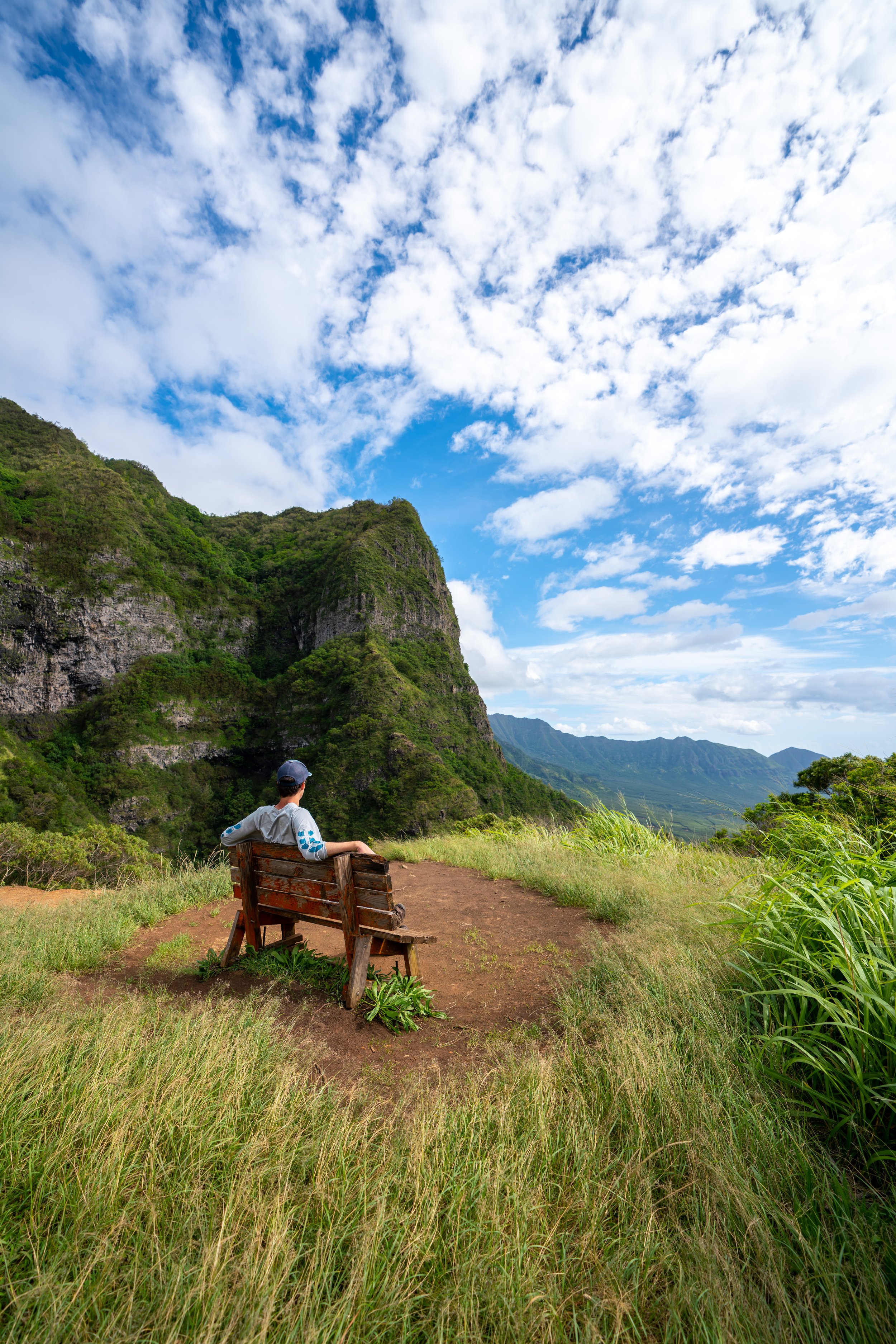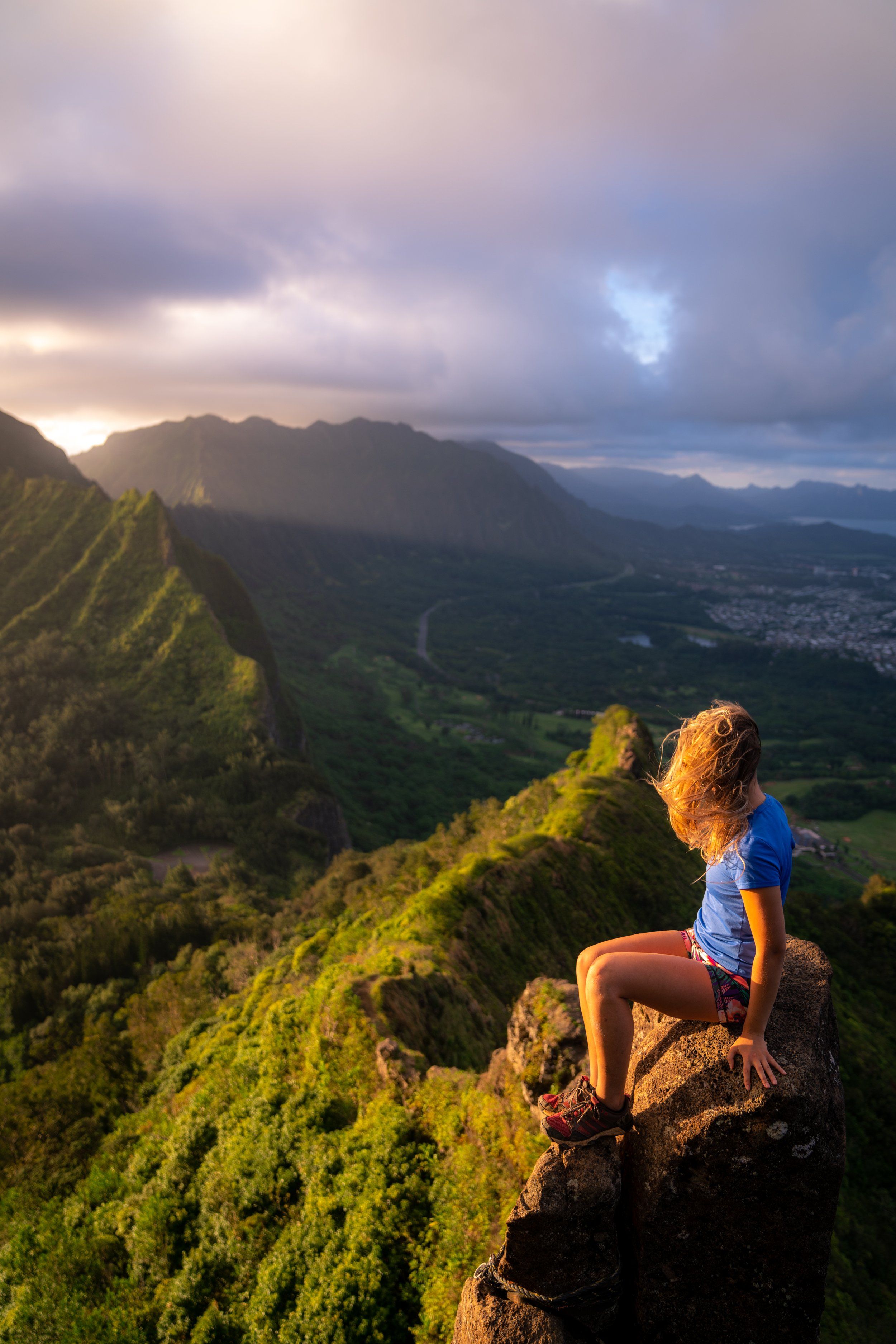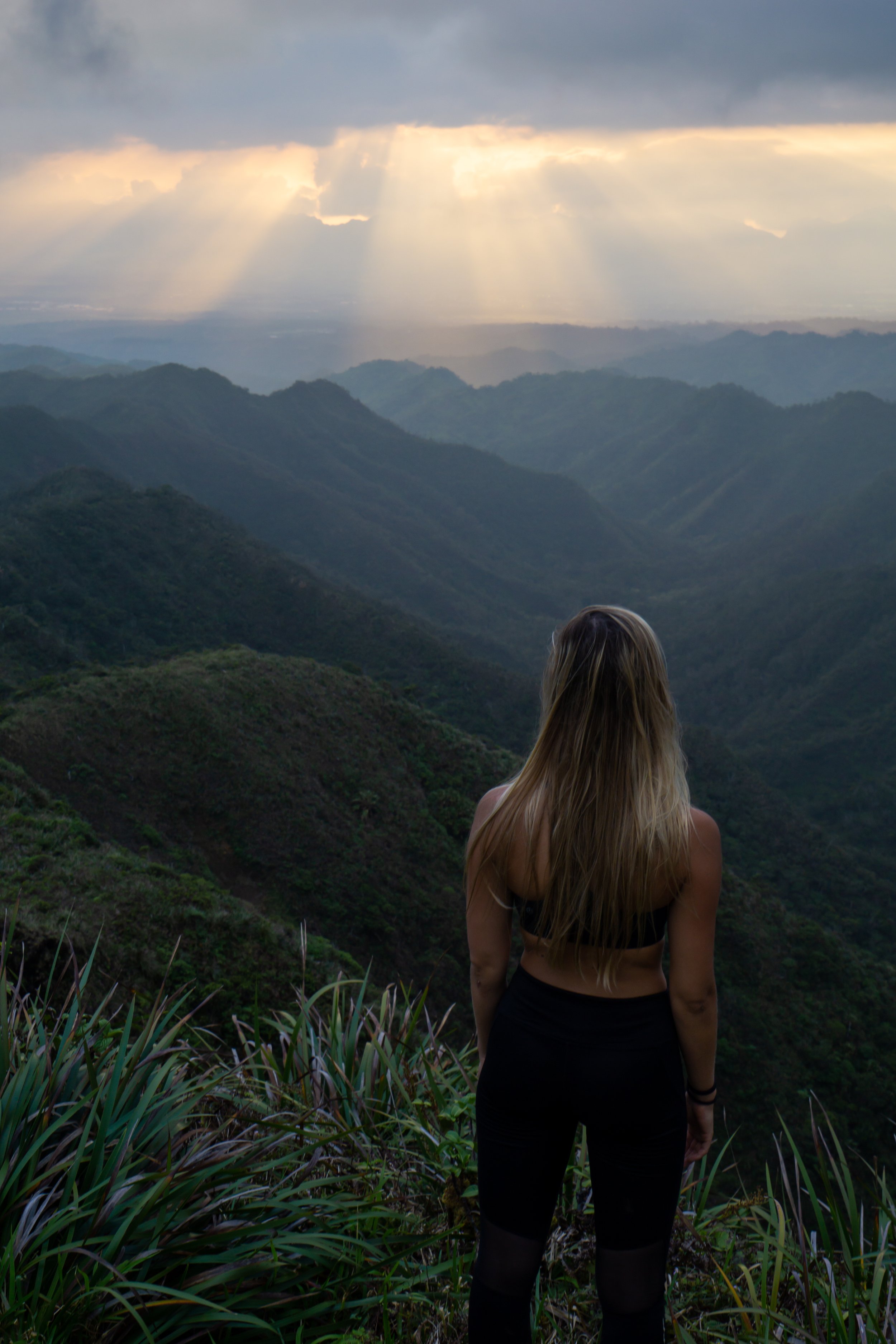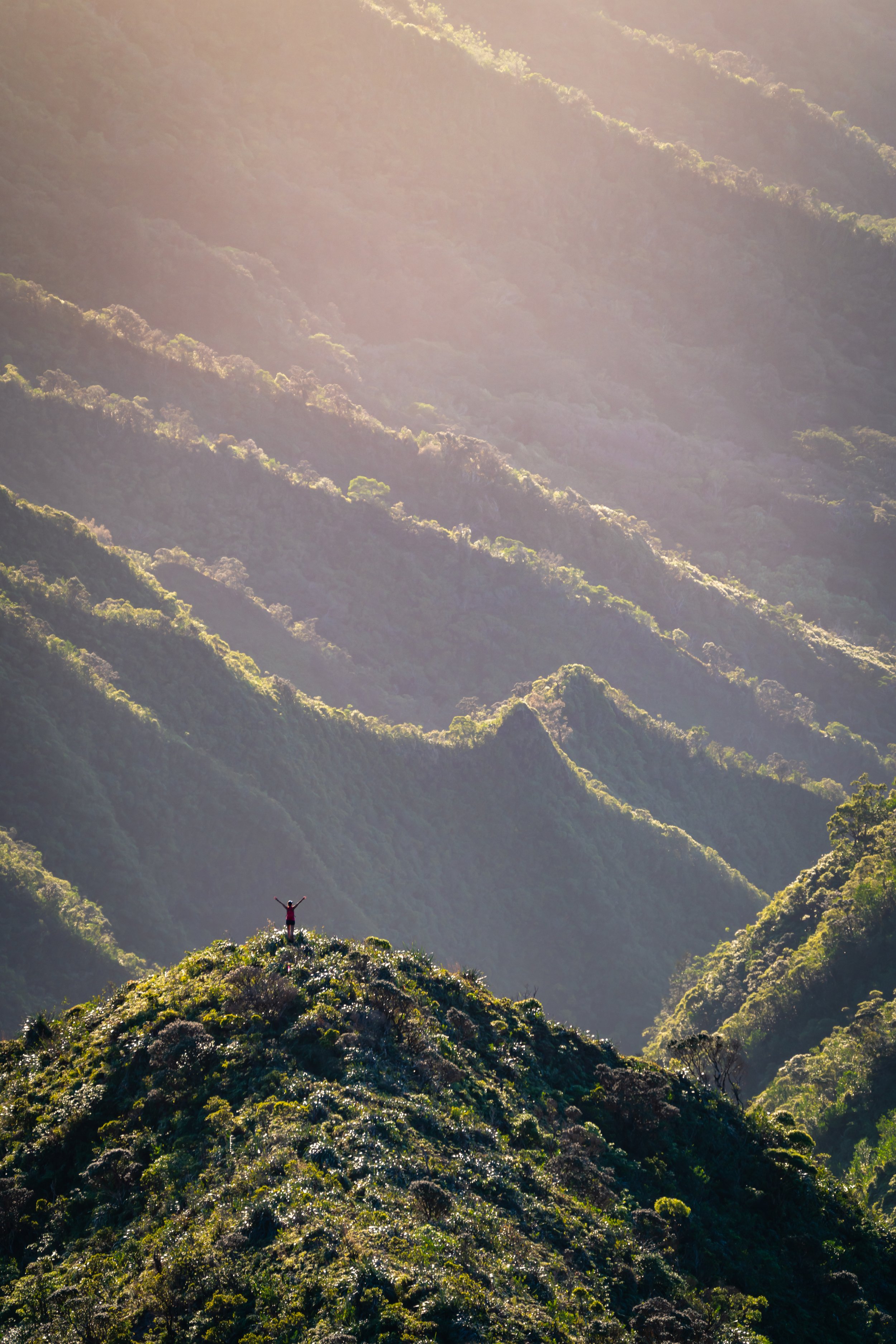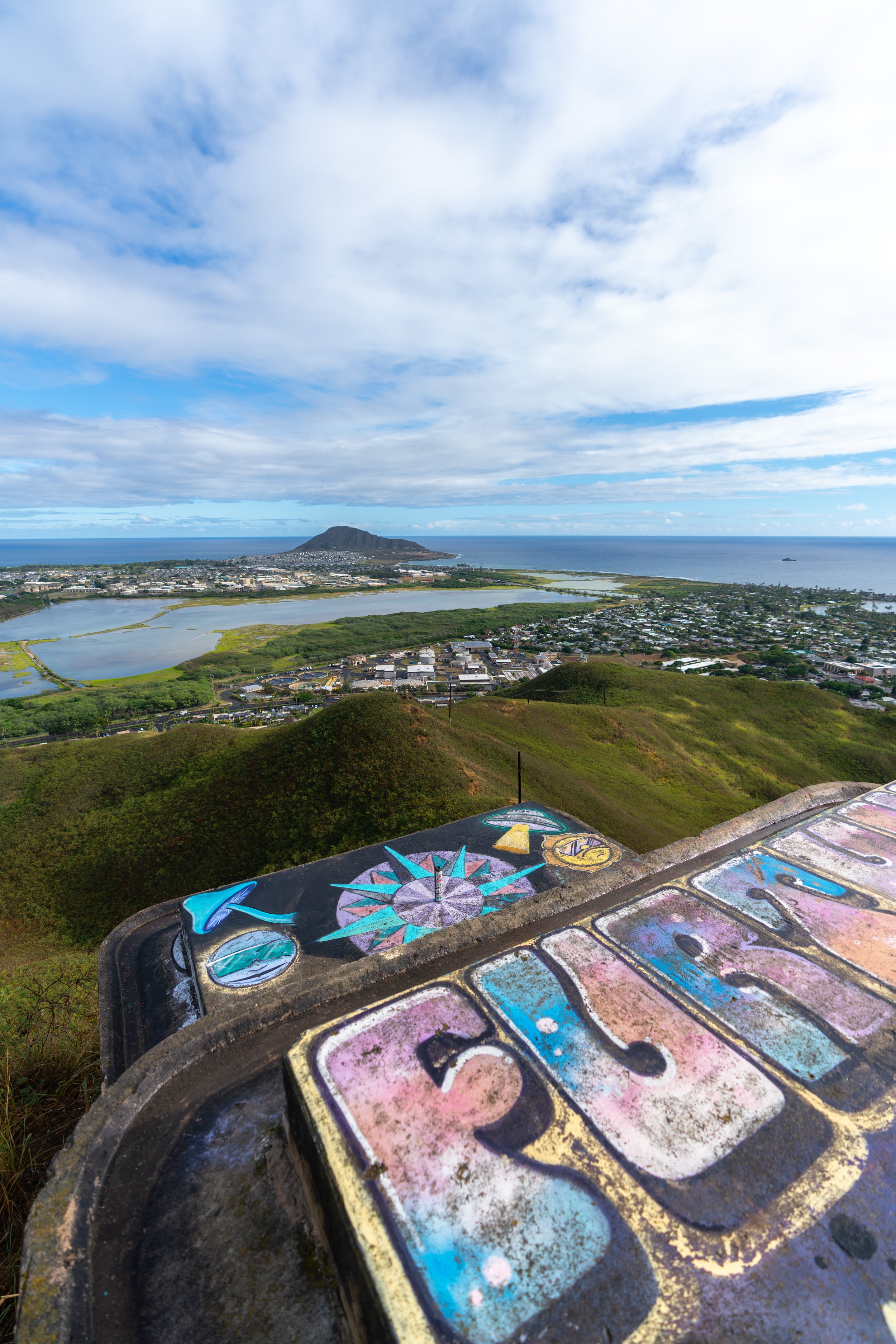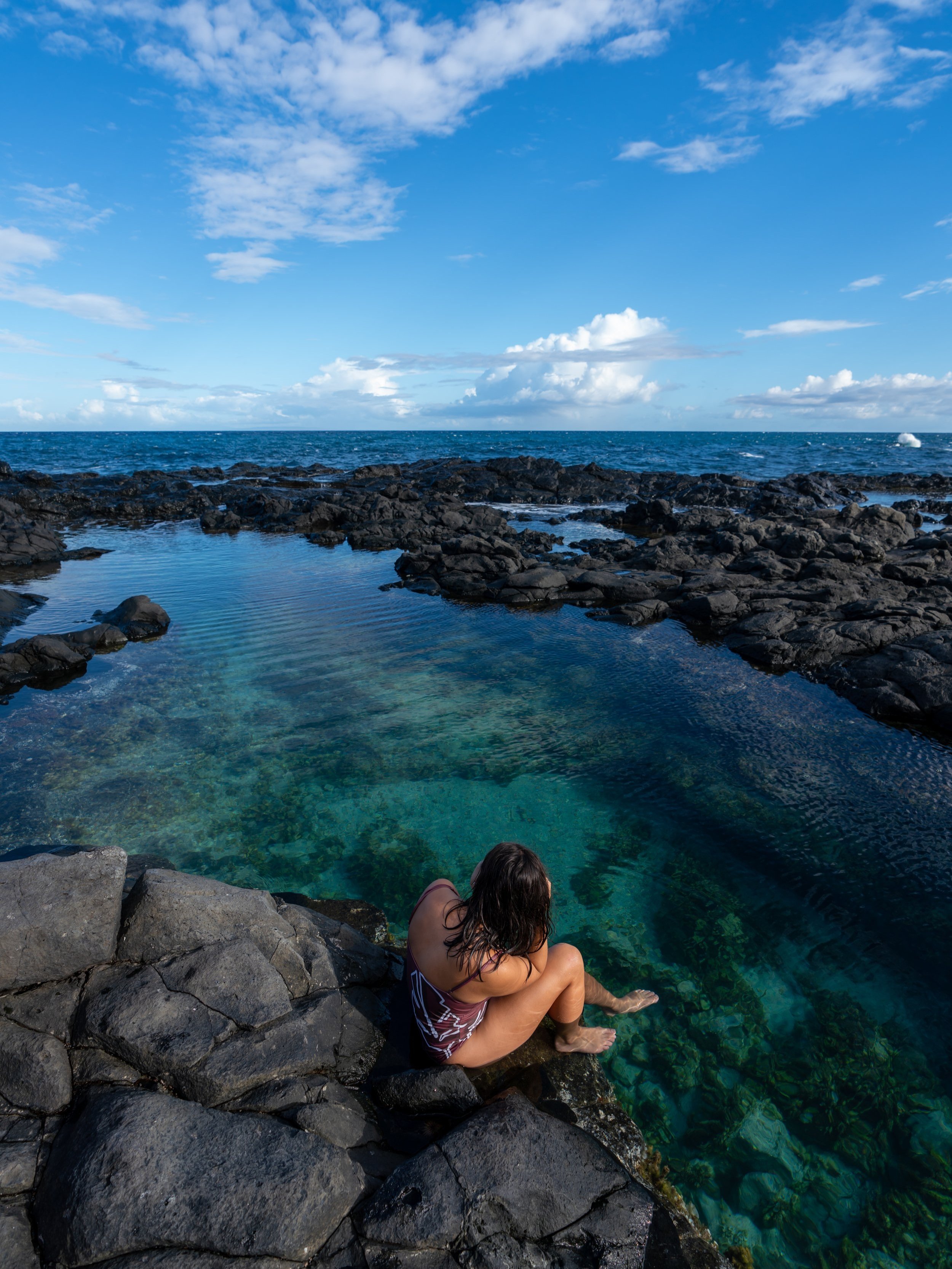Hiking the Puʻu ʻO Kona Trail via Kuliʻouʻou Valley on Oʻahu, Hawaiʻi
Distance: 3.6 miles / 5.8 km
The Puʻu ʻO Kona Ridge Trail in the back of Kuliʻouʻou Valley is often the second most sought-after adventure in the valley, following Kuliʻouʻou Ridge, and more often than not, hikers choose to connect the two into one longer loop on the Koʻolau Summit (KST).
By this, I mean that the Puʻu ʻO Kona-Kuliʻouʻou section of the KST is one of the most trafficked portions of the summit trail because it allows for a relatively quick adventure across the top, while starting and ending in the same place. The same cannot be said about most adventures across the summit.
In any case, Puʻu ʻO Kona ascends the much quieter and more challenging side of Kuliʻouʻou Valley, making it a perfect adventure for anyone looking for a bit of a longer day in the mountains.
Kuliʻouʻou Valley Trailhead Parking
Parking for both Kuliʻouʻou Ridge and the Puʻu ʻO Kona Trail are located at the same trailhead in the back of Kuliʻouʻou Valley on Kālaʻau Place.
That said, parking on Kālaʻau Place has very limited space for both residents’ cars, as well as hikers all fighting for the same spots. Therefore, parking is one of the biggest reasons that I recommend starting early, especially on a weekend!
Google Maps Directions: Puʻu ʻO Kona Trailhead
Hiking the Puʻu ʻO Kona Ridge Trail
The Puʻu ʻO Kona Ridge Trail begins at the very end of Kālaʻau Place, which follows the same trail as Kuliʻouʻou Ridge for the first 0.1 miles (0.2 km).
Kuliʻouʻou-Puʻu ʻO Kona Junction
When the Kulʻouʻou Ridge/ Valley Trail split off the service road to the right, stay straight to continue further, where the Puʻu ʻO Kona Trailhead will be found after the stream.
Puʻu ʻO Kona Ridge Trailhead
On the far side of the Kuliʻouʻou Stream, the Puʻu ʻO Kona Trail will begin in the corner of the pavement.
Following the trailhead, the Puʻu ʻO Kona Trail will ascend the ridge steeply, gaining about 600 ft. (183 m) in just 0.25 miles (0.4 km) to the ridge crest.
Puʻu ʻO Kona Ridge
When the trail tops out on the ridge, go right to continue toward the summit of Puʻu ʻO Kona.
That said, it’s important to take note of this left turn heading down the ridge, should you choose to come back the same way.
From experience, I know that this turn may not always be marked as well as it is here, meaning it can be very easy to miss if you aren’t paying attention.
Once on the ridge, the Puʻu ʻO Kona Trail will continue climbing gradually, with the steeper sections located closest to the summit.
If you like to look out for native plants while you hike, the mid-elevations of Puʻu ʻO Kona are one of the better places on Oʻahu to see the native Lama trees.
This is the tree to the left of the photo below.
Toward the summit, there are a few steeper sections on the ridge to scramble up.
That being said, there may or may not be a rope on each of these sections, but in any case, most of these final sections are composed of very loose, dry soil that gives way under your weight, so do your best to minimize causing even more erosion.
Puʻu ʻO Kona (False ʻO Kona)
What many people, including myself, call Puʻu ʻO Kona is actually not the true summit of ʻO Kona, meaning the real summit is the smaller, less significant peak just to the south, about halfway in between this peak and the Kuliʻouʻou Summit.
Regardless, this much more prominent summit, standing at roughly 2,350 ft. (716 m), is often referred to as Puʻu Oʻ Kona, especially when talking about the loop trail with Kuliʻouʻou Ridge.
If you are interested in making this crossover, the trail continues south along the KST across the back of Kuliʻouʻou Valley. To learn more and to see photos from this crossover on the summit trail, I encourage you to check out the full post linked below.
Read My Separate Post: Koʻolau Summit Trail (KST)
Native Plants on the Puʻu ʻO Kona Trail
The lower elevations of Kuliʻouʻou Valley are predominately non-native/ invasive species, but as the trail gains the ridge and ascends into the mesic-forested environment, native plants become much more abundant from here to the summit.
A few to look out for include ʻUhaloa, Lama, ʻŪlei, ʻŌhiʻa lehua, Kanawao, Kōpiko, Māmaki, and a species of the Kokolau flower (Bidens asymmetrica) that’s endemic to the Kuliʻouʻou Valley area only. Therefore, I ask that you please don’t pick any flowers!
That being said, if you are curious about trying the native Hawaiian Māmaki tea, I kindly ask that you don’t harvest Māmaki from our native forests but, instead, buy from one of the local reputable vendors, such as those listed below.
If you would like to know more about these and tons of other native Hawaiian plants from across the islands, I encourage you to check out my separate post linked below.
Read My Separate Post: Native Hawaiian Plant Guide



